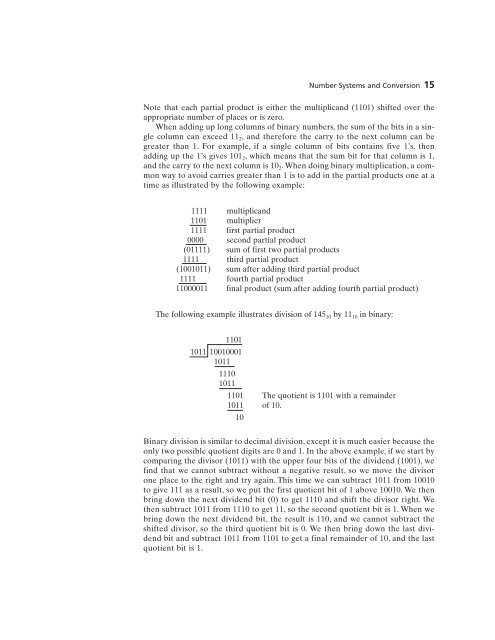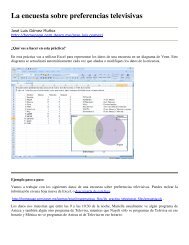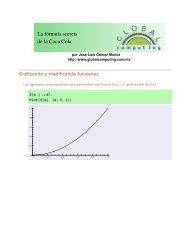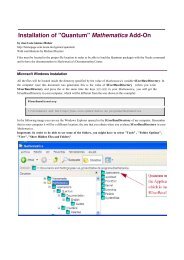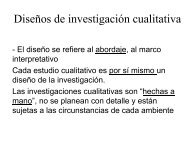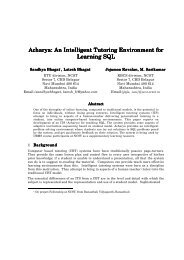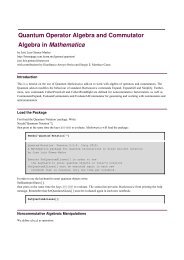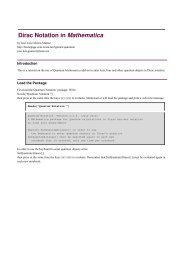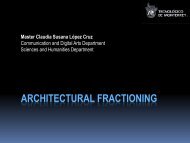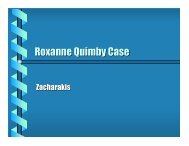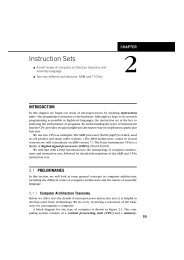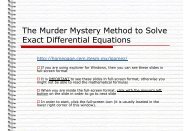Introduction Number Systems and Conversion
Introduction Number Systems and Conversion
Introduction Number Systems and Conversion
Create successful ePaper yourself
Turn your PDF publications into a flip-book with our unique Google optimized e-Paper software.
<strong>Number</strong> <strong>Systems</strong> <strong>and</strong> <strong>Conversion</strong> 15Note that each partial product is either the multiplic<strong>and</strong> (1101) shifted over theappropriate number of places or is zero.When adding up long columns of binary numbers, the sum of the bits in a singlecolumn can exceed 11 2 , <strong>and</strong> therefore the carry to the next column can begreater than 1. For example, if a single column of bits contains five 1’s, thenadding up the 1’s gives 101 2 , which means that the sum bit for that column is 1,<strong>and</strong> the carry to the next column is 10 2 . When doing binary multiplication, a commonway to avoid carries greater than 1 is to add in the partial products one at atime as illustrated by the following example:1111 multiplic<strong>and</strong>1101 multiplier1111 first partial product0000 second partial product(01111) sum of first two partial products1111 third partial product(1001011) sum after adding third partial product1111 fourth partial product11000011 final product (sum after adding fourth partial product)The following example illustrates division of 145 10 by 11 10 in binary:11011011 100100011011111010111101 The quotient is 1101 with a remainder1011 of 10.10Binary division is similar to decimal division, except it is much easier because theonly two possible quotient digits are 0 <strong>and</strong> 1. In the above example, if we start bycomparing the divisor (1011) with the upper four bits of the dividend (1001), wefind that we cannot subtract without a negative result, so we move the divisorone place to the right <strong>and</strong> try again. This time we can subtract 1011 from 10010to give 111 as a result, so we put the first quotient bit of 1 above 10010. We thenbring down the next dividend bit (0) to get 1110 <strong>and</strong> shift the divisor right. Wethen subtract 1011 from 1110 to get 11, so the second quotient bit is 1. When webring down the next dividend bit, the result is 110, <strong>and</strong> we cannot subtract theshifted divisor, so the third quotient bit is 0. We then bring down the last dividendbit <strong>and</strong> subtract 1011 from 1101 to get a final remainder of 10, <strong>and</strong> the lastquotient bit is 1.


